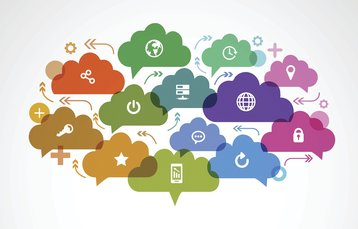APAC markets are famously fragmented across the region, resulting in different speeds, unique environments, and organizational strain to deliver consistent and flawless digital experiences.
As companies earnestly try to improve upon their agility and resourcefulness to meet consumer expectations while cutting costs, many are undergoing a seismic digital -transformation that’s heavily reliant on virtual technology - and yes, the cloud.
Inch by inch
The mandate to move everything to the cloud usually comes from the top-down without regard for the intricacies involved, leading most c-suite managers to think cloud migration is as easy as “lift and shift.” But IT Ops knows better. In fact, some of the most commonly asked questions are “How do I get cloud efficiencies at a price point that doesn’t break the bank, and how do we go about migrating everything?”
The answer to both questions is you need an incremental approach and the ability to capitalize on a new framework labelled artificial intelligence for IT Operations or AIOps.
First, let’s discuss the incremental approach:
If you’re just beginning your digital transformation, then you can learn from the mistakes of others, which invariably includes moving too fast. You need to have a plan and process in place. Perhaps disappointingly, the plan might mean not moving everything as quickly as possible, but moving select technologies – or even consolidating/upgrading – if you’re already running on a private cloud of some sort.
By taking a surgical approach to what moves to the cloud and when it happens, you’ll ease the complexity associated with managing multiple domains while enabling yourself to get better data from the technology that you’ve already migrated – which is crucial. As you start to migrate data and associated technology across different clouds, you need to employ a three-step process to understand how each piece is performing:
- Look at a before-and-after time-based perspective. How is the technology being used and how does it change over time with different usage and different models?
- Look at the interconnectivity of the infrastructure components and understand how everything is connected.
- How does the application layer on top and where does the application go over time? What other clouds exist and where else is it going to connect?
Complete visibility
With so much taking place within your IT ecosystem and the volume, velocity, and variety of data being produced, it’s no longer possible for manual processes to maintain the status quo. To master today’s ephemeral IT landscapes, your multi-cloud strategy has to focus on complete visibility and use AIOps to make sense of the data emitted from your environment.
AIOps applies artificial intelligence or machine learning to the mass quantities of data produced by your ecosystem, providing you with the necessary insight to see how your IT environment is performing, contextualize the relationships between your infrastructure/applications/business services, and act on issues that may compromise your ecosystem’s ability to function.
When properly applied, AIOps is a difference-maker, enabling IT Operations to automate processes and make better decisions, faster. But for AIOps to work as it should, it all comes down to down to the data.
Any neural-net, engine or model is only as useful as the data that’s pumped into it; garbage in, garbage out. To properly prepare the data for use within AIOps, the data has to undergo five-step series that includes:
- Data Collection – The initial and continuing discovery of data from every device within your IT ecosystem.
- Data Preparation – Removing multiple sources and environments that send alerts about the same instance and then establishing a common data model for the retained data.
- Data Enrichment – Providing context – or additional insight – to the raw data by adding metadata to device or service metrics.
- Data Analysis – Includes the process of reducing the amount of non-actionable data via dynamic baselining, thresholding, and event correlation.
- Data-Driven Action – Taking automated action on the data after it has undergone the previous processes.
AIOps is a sound strategy for multi-cloud usage because it provides enhanced visibility into your IT ecosystem, enabling you to predict where problems can happen in the future, provide capacity planning dashboards, and showing which clouds you’re best utilizing.
If you’re considering a move to the cloud – or employing a multi-cloud strategy – rest assured that it doesn’t have to be a painful transition.As is the case with any move, it’s best to employ a strategy that’s well-planned, statistically driven, and allows for complete visibility; even if it’s cloudy.






